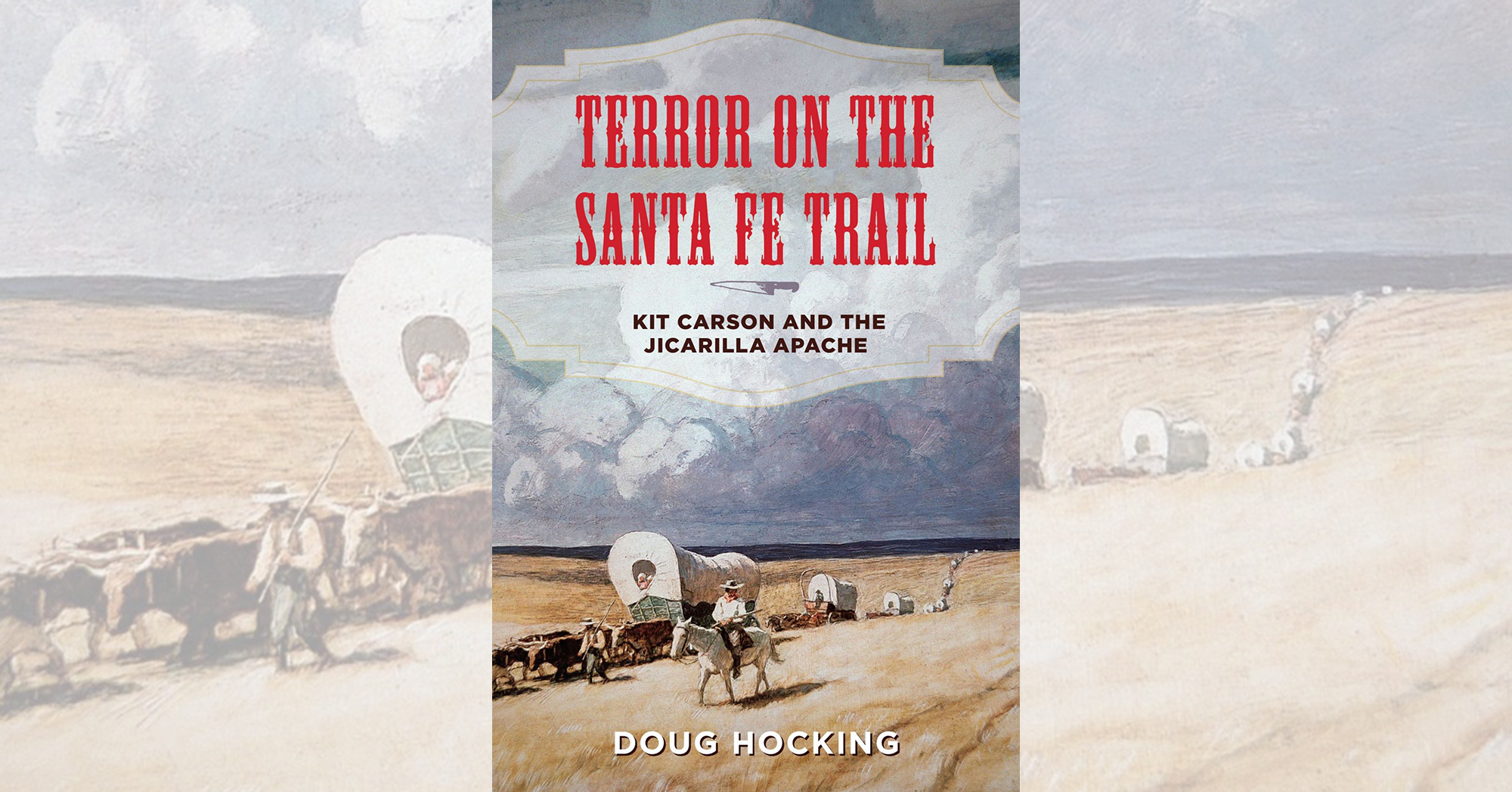Terror on the Santa Fe Trail: Kit Carson and the Jicarilla Apache, by Doug Hocking, TwoDot, Helena, Mont., 2019, $29.95
Among the spoils the United States reaped from its 1846–48 war with Mexico was the region that became New Mexico Territory—and with it a collection of resident Indian tribes collectively called Apaches but culturally more diverse than the term implies. Over the following decade one Apache group, the Jicarillas, acquired a special notoriety, three times blocking the Santa Fe Trail and in the March 30, 1853, Battle of Cieneguilla crushing the U.S. cavalry. “Since the annexation of this territory to the United States they have committed acts of murder, robbery and other crimes, which, in savage cruelty, stand without a parallel in history,” Captain Edward A. Graves reported from the Abiquiu Indian Agency. “They are the most daring, brave and heartless tribe of Indians who inhabit New Mexico.” The better-known Chircahuas operated in what would become Arizona.
With a background in military intelligence and early years spent living among the Jicarillas, historical archaeologist and ethnographer Doug Hocking tones down the rhetoric somewhat, despite the book title. What emerges from the narrative is a people doing their level best to cope with the new regime and lifestyle imposed on them, resorting to the warpath only when they saw no alternative. In the case of Cieneguilla, it was clear the fight could have been avoided but for the vainglorious provocation of Lieutenant John Wynn Davidson.
Hocking also takes a balanced look at one of the U.S. Army’s most successful counters to the Jicarillas—renowned mountain man, explorer and scout Colonel Christopher Carson. Although Kit Carson was a formidable opponent in war, as a peacetime Indian agent he earned almost universal respect from American Indians—including the Jicarillas—for being a sympathetic advocate whose word they could trust.
Ultimately, the Jicarillas tried to settle into agriculture, only to be repeatedly undone by constant changes in the lands allotted them. By the end of the narrative Carson emerges from his own legend as a more nuanced human being, and the author shows how the Jicarillas, against multiple hardships and challenges, have survived.
—Jon Guttman





